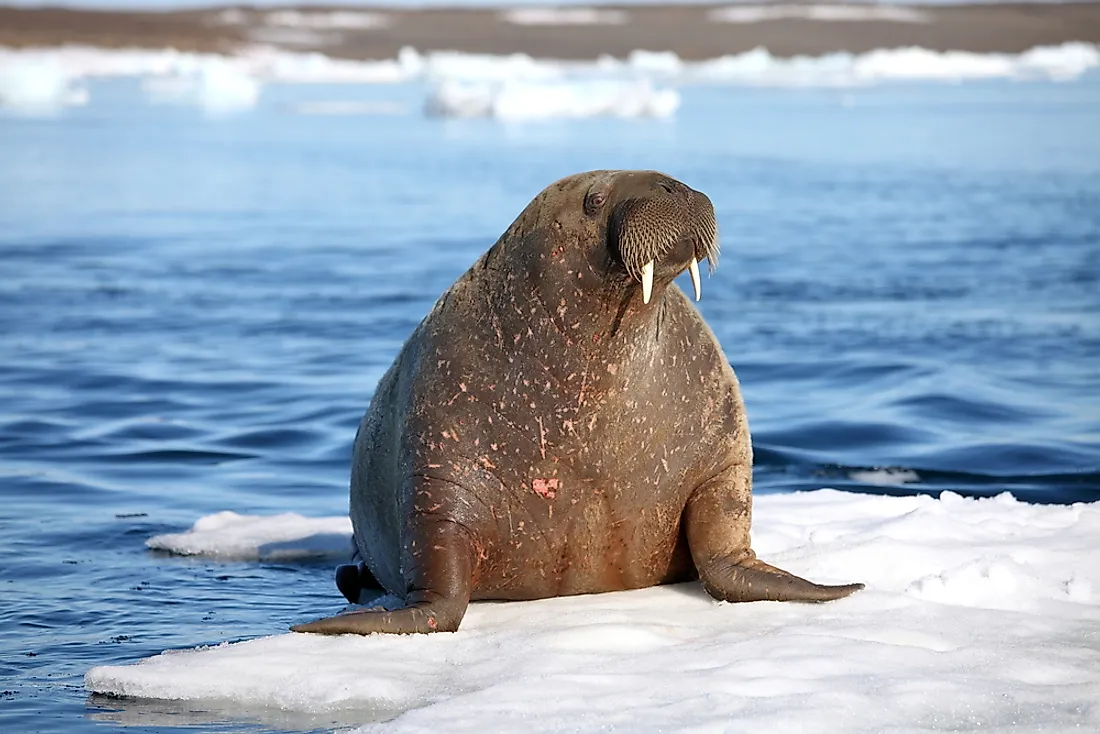Walrus Facts - Animals of the Ocean

The walrus is a flippered marine mammal that is the only living species in the Odobenidae family. It is divided into three subspecies according to their habitats: Atlantic Walrus, Pacific walrus, and Arctic walrus. The three subspecies are found in Atlantic, Pacific, and Arctic Oceans respectively. Walruses have played a significant role in promoting the culture of the indigenous Arctic people who have hunted it for food, tusk, and bones. They were also hunted and killed for their blubber and meat in the 19th century. The population of walruses dropped greatly at the beginning of the 20th century due to the excessive hunting. Although, it has somewhat rebounded since then.
4. Physical Description
The body shape of a walrus is similar to sea lions and seals. Its most peculiar feature is the long tusk present on both males and females. The tusk can reach 3.3 feet and weigh 12 pounds and the male has a slightly longer tusk compared to the female. Walruses can use their tusks to show dominance and to fight. The tusk is surrounded by a mat of stiff bristle called vibrissae that gives the walrus a whiskered appearance. The body of a walrus is unevenly covered with fur and has a bald appearance. Around the neck and shoulder of a male walrus, the skin is highly wrinkled and thick. Old walruses are nearly pink in appearance and can even appear white when swimming. The male has a baculum measuring up to 25 inches in length.
3. Diet
The walrus forages mainly on the sea floor and prefers the shallow shell region. The animals are diverse and opportunistic feeders that feed on more than 60 genera of marine animals including scrubs, mollusks, shrimp, and tube worms. The walrus searches and identifies prey with its sensitive vibrissae and seals its powerful lips to the prey to suck out the meat. Walruses also prey on young seals but rarely prey on seabirds or ice-entrapped narwhals. Although it is said the animals scavenge on carcasses of whales, there is little evidence to prove this theory.
2. Habitat and Range
A large number of Pacific walruses spend their summer in the north of Bering Strait in the Chukchi Sea and the Laptev Sea. In the spring, the walruses gather from the coast of Alaska to the Gulf of Anadyr. During the winter, they congregate along the coast of Siberia and the southern coast of Alaska. A smaller population of Atlantic walruses can be found in the Canadian Arctic and in the western part of Russia. There is also a small population of Laptev walruses that are restricted mainly to the central and western regions of the Laptev Sea. With their limited diving abilities, the animals are confined to shallow waters and ice which enables them to access food.
1. Behavior
Walruses are social animals that live in large numbers. They move in large herds with the male and female moving in separate herds during the non-breeding season. The animals mark their territory and display dominance through the use of their tusks, bodies, and aggression. They spend most of their time on sea ice looking for food and resting. Walruses migrate in large numbers to the north during the summer and to the south during the winter. The migration can be long and dramatic.











